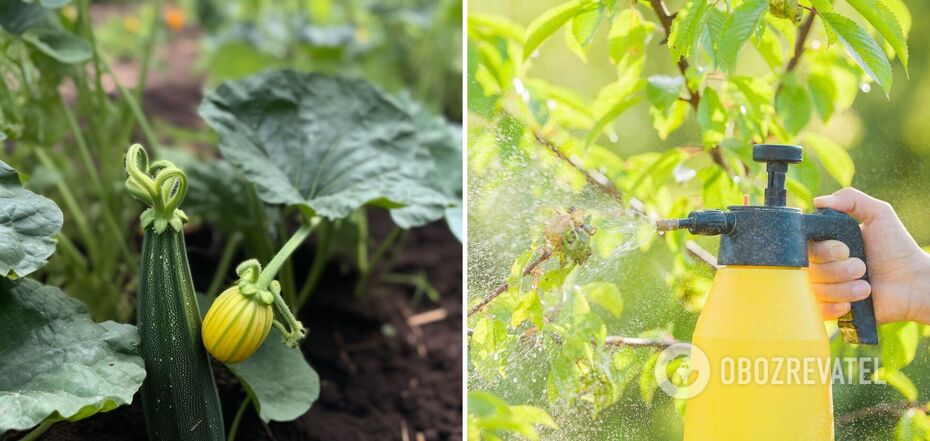Life
What to do with the white stains on zucchini leaves: how to save the bushes
One of the most unpleasant things you can see in your vegetable garden is a white coating on the leaves of a zucchini or other pumpkin crop. Unfortunately, this is a symptom of a disease that can kill the entire plant if you do not take action as soon as possible.
As OBOZREVATEL found out, we are talking about powdery mildew. It is a fungal infestation that causes drying and death not only of leaves, but also of fruits. You need to start fighting it as soon as you notice the first symptoms.
Good weather is the reason for the development of the disease
Infection of zucchinis and other vegetable crops with powdery mildew is promoted by good weather. Warm and dry conditions, as well as large variations in substrate moisture levels due to watering create ideal conditions for the pathogen. That's why during periods of warm, sunny weather, you need to be especially vigilant for signs of powdery mildew.
How to recognize powdery mildew?
The first alarming symptom is the appearance of a white plaque that looks like flour. Over time, it begins to turn brown and then dark brown. In this case, the pathogen spreads not only to the leaves, but also to the flowers and young shoots. If the disease is not treated, it will quickly destroy the entire plant.
Is it possible to cut off the damaged leaves?
Experienced gardeners argue that it is the pruning of damaged parts of the plant that is the first step in the fight against the disease. This will prevent the spread of the pathogen.
Composting such leaves is not allowed under any circumstances. They should be burned, and the tools that were used for pruning should be disinfected.
Home remedies for powdery mildew
Sprays to combat the pathogen can be prepared at home. They will be more environmentally friendly and safer than chemical fungicides. Only common ingredients will be needed.
- Garlic-based spray
To prepare this remedy, take 10 garlic cloves, fill them with a liter of boiling water and leave to infuse overnight. The next day, strain the liquid, add 3 tablespoons of rapeseed oil and mix thoroughly. This concentrate should be diluted with four liters of clean water and sprayed on the plants. To effectively fight the infection, repeat the procedure every three to four days.
- Spray based on baking soda and laundry soap
Dilute one teaspoon of baking soda in two liters of water and add 5 ml of liquid laundry soap or the same amount of hard soap diluted in water. The soap will make it last longer on the leaf. Mix the liquid thoroughly and spray it on zucchini and other vegetables on which you noticed traces of powdery mildew. This treatment should be repeated every three days.
How to prevent powdery mildew?
To make it easier to combat the pathogen, don't plant too densely. Keeping the distance itself can deter the spread of any fungal disease, not just powdery mildew.
Avoid overfertilizing as well. This is especially true for nitrogen fertilization. Too much nitrogen can reduce the resistance of zucchinis to the appearance of the disease.
Previously OBOZREVATEL told how to recognize the fungal infestation of cucumbers and what to do when it appears.
Subscribe to the channels OBOZREVATEL in Telegram and Viber to keep up with the latest developments.



























